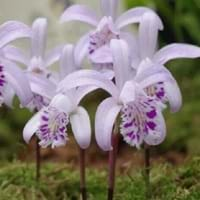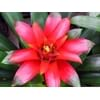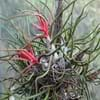Life Span
Perennial
Perennial
Origin
South America
China, India, Nepal
Types
Bigleaf hydrangea, Hortensia, Smooth hydrangea, Oakleaf hydrangea, Annabelle
Pleione chunii , Pleione limprichtii
Number of Varieties
Not Available
Habitat
Forest edges, Hillside, Woods
Hilly upland habitat, Wooded hillsides
USDA Hardiness Zone
10-12
13-15
AHS Heat Zone
12*10
12-10
Sunset Zone
H1, H2, 22, 23, 24
Not Available
Habit
Rosette/Stemless
Clump-Forming
Flower Color
Purple, Plum
White, Yellow, Yellow green, Brown
Flower Color Modifier
Not Available
Bicolor
Fruit Color
Not Available
Non Fruiting Plant
Leaf Color in Spring
Gray Green, Dark Green, Silver
Light Green
Leaf Color in Summer
Gray Green, Dark Green, Silver
Light Green, Yellow green
Leaf Color in Fall
Gray Green, Dark Green, Silver
Light Green
Leaf Color in Winter
Gray Green, Dark Green, Silver
Not Available
Leaf Shape
Oblovate
Elliptic to oblong
Plant Season
Spring, Summer, Fall, Winter
Spring, Winter
Sunlight
Partial Sun, Partial shade
Partial shade, Full Shade
Type of Soil
Not Available
Not Available
The pH of Soil
Not Available
Not Available
Soil Drainage
Not Available
Well drained
Bloom Time
Spring, Late Spring, Early Fall, Fall
Early Spring, Winter, Late Winter
Tolerances
Not Available
Light Frost
Where to Plant?
Container, Ground
Ground, Pot
How to Plant?
Seedlings, Stem Planting
Bulbs
Plant Maintenance
Medium
Medium
Watering Requirements
Not Available
Do not water excessively, Needs very little water
In Summer
Average Water
Lots of watering
In Spring
Moderate
Moderate
In Winter
Average Water
Average Water
Soil pH
Not Available
Not Available
Soil Type
Not Available
Not Available
Soil Drainage Capacity
Not Available
Well drained
Sun Exposure
Partial Sun, Partial shade
Partial shade, Full Shade
Pruning
Remove damaged leaves, Remove dead branches, Remove dead leaves
Prune if you want to improve plant shape, Remove damaged leaves, Remove dead branches, Remove dead leaves
Fertilizers
All-Purpose Liquid Fertilizer
All-Purpose Liquid Fertilizer, Compost
Pests and Diseases
Red blotch
Free of serious pests and diseases
Plant Tolerance
Not Available
Light Frost
Flower Petal Number
Single
Single
Foliage Texture
Coarse
Medium
Foliage Sheen
Matte
Matte
Attracts
Hummingbirds
Birds, Bumblebees, Butterflies, Hummingbirds, Not Available
Allergy
Chest tightness, Diarrhea, Dizziness, Nausea, Vomiting
Unknown
Aesthetic Uses
Not Available
Bonsai, Showy Purposes
Beauty Benefits
Not Available
Not Available
Edible Uses
Not Available
No
Environmental Uses
Air purification
Air purification
Medicinal Uses
Fever, Kidney problems, Urinary tract problems
No Medicinal Use
Part of Plant Used
Flowers, Root
Not Available
Other Uses
Not Available
Acts as a natural source of rain water for birds and insects., Beneficial species for attracting pollinators
Used As Indoor Plant
Not Available
No
Used As Outdoor Plant
Yes
Yes
Garden Design
Container, Hanging Basket, Tropical
Container, Hanging Basket, Houseplant, Tropical
Botanical Name
TILLANDSIA cyanea
SIGMATOSTALIX amazonica
Common Name
Linden's Air Plant, Pink Quill
Amazon Sigmatostalix Orchid, Miniature Orchid
In Hindi
Hydrangea
miniature orchid
In German
Hortensie
miniature orchid
In French
Hortensia
Pleione
In Spanish
Hortensia
Pleione
In Greek
υδραγεία
Pleione
In Portuguese
Hortênsia
miniature orchid
In Polish
Hortensja
miniature orchid
In Latin
Hibiscus
miniature orchid
Phylum
Not Available
Magnoliophyta
Class
Not Available
Liliopsida
Order
Not Available
Asparagales
Family
Bromeliaceae
Orchidaceae
Genus
Not Available
Pleione
Clade
Not Available
Angiosperms, Monocots
Tribe
Not Available
Coelogyneae
Subfamily
Not Available
Epidendroideae
Number of Species
Not Available
Not Available
Importance of Pink Quill and Miniature Orchid
Want to have the most appropriate plant for your garden? You might want to know the importance of Pink Quill and Miniature Orchid. Basically, these two plants vary in many aspects. Compare Pink Quill and Miniature Orchid as they differ in many characteristics such as their life, care, benefits, facts, etc. Every gardener must at least have the slightest clue about the plants he wants to plant in his garden. Compare their benefits, which differ in many ways like facts and uses. The medicinal use of Pink Quill is Fever, Kidney problems and Urinary tract problems whereas of Miniature Orchid is No Medicinal Use. Pink Quill has beauty benefits as follows: Not Available while Miniature Orchid has beauty benefits as follows: Not Available.
Compare Facts of Pink Quill vs Miniature Orchid
How to choose the best garden plant for your garden depending upon its facts? Here garden plant comparison will help you to solve this query. Compare the facts of Pink Quill vs Miniature Orchid and know which one to choose. As garden plants have benefits and other uses, allergy is also a major drawback of plants for some people. Allergic reactions of Pink Quill are Chest tightness, Diarrhea, Dizziness, Nausea and Vomiting whereas of Miniature Orchid have Unknown respectively. Having a fruit bearing plant in your garden can be a plus point of your garden. Pink Quill has no showy fruits and Miniature Orchid has no showy fruits. Also Pink Quill is not flowering and Miniature Orchid is not flowering . You can compare Pink Quill and Miniature Orchid facts and facts of other plants too.




